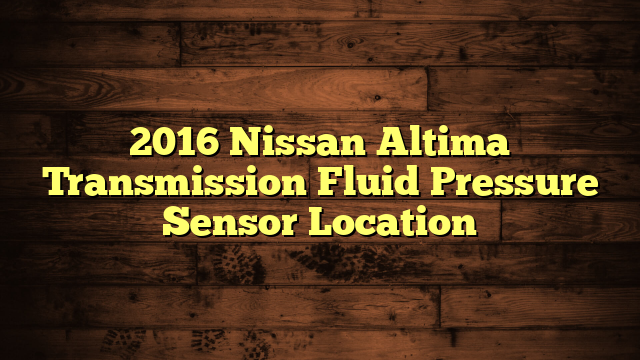Caterpillar C13 Sensor Locations: By Sensor Guides
Sensor locations play a crucial role in the proper functioning and performance of Caterpillar C13 engines. These sensors provide valuable data to the engine control module, enabling it to make critical adjustments and ensure optimal operation. Understanding the various sensor locations in the engine can help technicians and operators troubleshoot issues, perform maintenance, and ensure the engine runs smoothly.
In this article, we will explore the sensor locations in the Caterpillar C13 engine, their functions, access points, and troubleshooting tips.
Table of Contents
Caterpillar C13 Sensor Locations
Coolant Temperature Sensor
The coolant temperature sensor in the Caterpillar C13 engine is responsible for monitoring the temperature of the engine coolant. It plays a vital role in regulating the engine’s operating temperature and preventing overheating.
The sensor is usually located near the thermostat housing or in the engine block. Accessing the coolant temperature sensor may require removing certain components or using specialized tools.
If the engine shows overheating or erratic temperature readings, checking the coolant temperature sensor and its connections is recommended.
Cat C13 Oil pressure sensor location
The oil pressure sensor in the Caterpillar C13 engine is responsible for measuring the oil pressure and providing real-time data to the engine control module. It ensures the engine receives proper lubrication and helps safeguard against potential damage.
The oil pressure sensor is typically located on the engine block or near the oil filter housing. Removing surrounding components or using appropriate tools may be necessary to access the sensor.
Inspecting the oil pressure sensor and its connections is crucial if there are concerns about low oil pressure or abnormal readings.
Fuel Pressure Sensor
The fuel pressure sensor in the Caterpillar C13 engine is designed to monitor the fuel pressure within the fuel system. It ensures the engine receives the correct amount of fuel for efficient combustion.
The fuel pressure sensor is usually positioned along the fuel rail or fuel line. Accessing the sensor may require removing protective covers or using specialized tools.
If there are issues related to fuel pressure, such as poor engine performance or fuel system malfunctions, checking the fuel pressure sensor and its connections is advisable.
Boost Pressure Sensor
The boost pressure sensor in the Caterpillar C13 engine plays a significant role in monitoring the pressure of the intake air, especially in turbocharged engines. It helps regulate the air-fuel mixture and optimize engine performance.
The boost pressure sensor is commonly located on the intake manifold or near the turbocharger. Accessing the sensor may involve removing components or using specific tools.
Inspecting the boost pressure sensor and its connections is essential if there are concerns regarding low or erratic boost pressure.
Exhaust Gas Temperature Sensor
The exhaust gas temperature (EGT) sensor in the Caterpillar C13 engine measures the temperature of the exhaust gases exiting the engine. It helps monitor the engine’s combustion efficiency and assists in maintaining emissions within acceptable limits.
The EGT sensor is typically positioned in the exhaust manifold or exhaust pipe. Accessing the sensor may require heat-resistant gloves or protective covers.
If there are issues related to high exhaust gas temperatures or abnormal readings, checking the EGT sensor and its connections is recommended.
Cat C13 thermostat location
The thermostat for a Caterpillar C13 engine is located behind the radiator fan on the front of the engine. It is a small, cylindrical device with a temperature-sensitive wax pellet inside. The wax pellet melts at a specific temperature, which opens the thermostat and allows coolant to flow through the engine.
Boost sensor location C13
The boost sensor on a Caterpillar C13 engine is located on the intake manifold, near the turbocharger.
It is a small, cylindrical sensor with a threaded opening. The sensor measures the pressure of the air entering the engine and sends a signal to the engine control unit (ECU). The ECU uses this information to control the fuel mixture and ignition timing.
Cat C13 problems; The most common problems so far reported
The Caterpillar C13 engine is a popular choice for various applications, but it can experience certain problems like any engine. Here are some common issues that owners and operators have reported with the Caterpillar C13 engine:
Regeneration Issues
Some C13 engines equipped with diesel particulate filters (DPF) may experience difficulties with the regeneration process. This can result in frequent regeneration cycles, incomplete regenerations, or the engine going into “limp mode.” Proper maintenance and following Caterpillar’s guidelines for regeneration can help mitigate these issues.
Turbocharger Problems
Turbocharger failures or issues are not uncommon in the C13 engine. Symptoms may include loss of power, excessive smoke, or abnormal noise from the turbocharger. Regularly inspecting and maintaining the turbocharger system, including air filters and oil changes, can help prevent these problems.
Coolant Leaks
Coolant leaks can occur in the C13 engine, leading to overheating and potential engine damage. Common leak areas include the water pump, radiator, hoses, or gaskets. Regularly inspecting the cooling system and promptly addressing any leaks can help prevent overheating issues.
Fuel System Troubles
Fuel-related problems can arise in the C13 engine, such as clogged fuel filters, fuel injector issues, or low fuel pressure. Regular fuel filter changes and using clean fuel can help prevent these problems. If fuel system issues persist, consulting with a qualified technician is recommended.
Oil Leaks
Oil leaks can occur in various areas of the engine, including gaskets, seals, or the oil cooler. If left unaddressed, these leaks can lead to reduced oil levels and potential engine damage. Regular engine inspection and maintenance, including checking for oil leaks, are crucial.
EGR Valve and Cooler Problems
The Exhaust Gas Recirculation (EGR) system, including the EGR valve and cooler, can experience issues in the C13 engine. Symptoms may include reduced power, rough idling, or increased emissions. Proper maintenance, including cleaning or replacing the EGR valve and cooler as recommended, can help mitigate these problems.
It’s important to note that these are just a few examples of potential problems and that individual experiences may vary. Regular maintenance, following manufacturer guidelines, and addressing any issues promptly with the help of a qualified technician are key to keeping the Caterpillar C13 engine running smoothly.
Conclusion
Knowing the sensor locations in the Caterpillar C13 engine is valuable for effective troubleshooting, maintenance, and performance optimization. The coolant temperature sensor, oil pressure sensor, fuel pressure sensor, boost pressure sensor, and exhaust gas temperature sensor all play critical roles in the engine’s overall functionality. Understanding their functions, accessing their locations, and addressing any potential issues can contribute to the smooth operation and longevity of the Caterpillar C13 engine. Regular inspections and maintenance of these sensors can help ensure optimal performance and prevent costly repairs.





